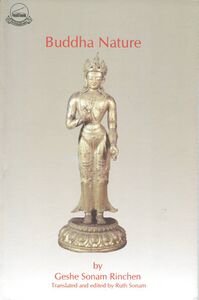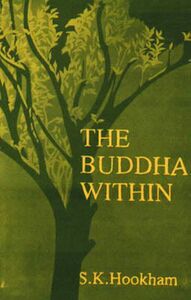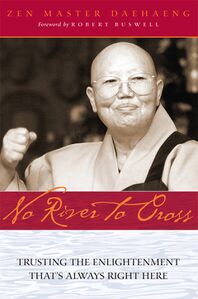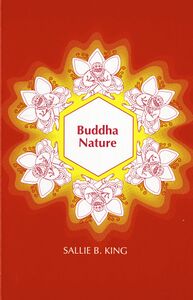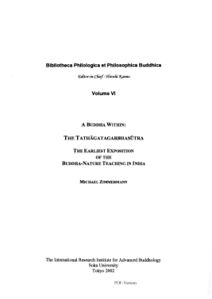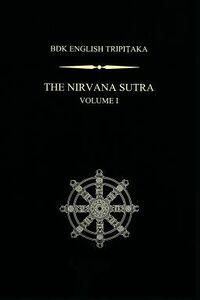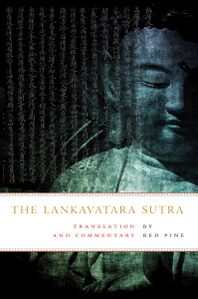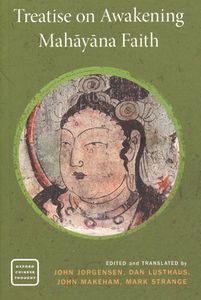Begin Discovering Your Buddha-Nature: Difference between revisions
No edit summary |
No edit summary |
||
| Line 5: | Line 5: | ||
<div class="position-absolute h-100 w-100 opac-50 bg-light"></div> | <div class="position-absolute h-100 w-100 opac-50 bg-light"></div> | ||
<div class="position-relative section-header pt-5 mb-4 pl-4 pb-2 border-bottom-rightfade">New to Buddhism or to the concept of buddha-nature? Discover how buddha-nature is articulated in various Buddhist traditions by exploring multimedia, articles, books, and translations of primary sources from leading Buddhist teachers and academics. This page brings together a collection of curated resources designed to make the concept of buddha-nature understandable and accessible to a general audience. | <div class="position-relative section-header pt-5 mb-4 pl-4 pb-2 border-bottom-rightfade">New to Buddhism or to the concept of buddha-nature? Discover how buddha-nature is articulated in various Buddhist traditions by exploring multimedia, articles, books, and translations of primary sources from leading Buddhist teachers and academics. This page brings together a collection of curated resources designed to make the concept of buddha-nature understandable and accessible to a general audience. | ||
| Line 292: | Line 164: | ||
</div> | </div> | ||
Buddha-Nature in East Asia | |||
Multimedia | |||
<div class="text-80 text-muted position-absolute" style="bottom: 7px; right: 10px;">[[Site Guide|Complete Site Guide]]</div> | |||
</div> | |||
<div class="row m-0 px-lg-5 pt-4"> | |||
{{LocalTile | |||
|classes=col-sm-6 col-lg-6 | |||
|link=Media/Buddha-Nature_—_Episode_22_of_True_Words:_A_Shingon_Buddhist_Podcast | |||
|header=Buddha-Nature by Rev. George Kosho Finch | |||
|image=https://commons.tsadra.org/images-commons/8/84/Finch_Rev._George_Kosho_patheos.jpg | |||
|content=This week's topic is Buddha Nature, in Sanskrit: ''tathāgatagarbha'' (如来藏). All sentient beings are considered to be in possession of the Buddha Nature, the potential to attain enlightenment. | |||
|watermark=Audio | |||
}} | |||
{{LocalTile | |||
|classes=col-sm-6 col-lg-6 | |||
|link=Media/It_Is_Your_Buddha_Nature_That_Sees,_Hears_and_Speaks!―Dharma_Talk_by_Daehaeng_Kun_Sunim | |||
|header=It Is Your Buddha-Nature That Sees, Hears, and Speaks! | |||
|image=https://commons.tsadra.org/images-commons/3/37/Daehaeng_Wikipedia.jpg | |||
|content=Daehaeng Kun Sunim, a Seon (Zen) master and Buddhist nun from Korea, responds to questions about the concept of Juingong (the underlying mind) from an audience member. | |||
|watermark=Video | |||
}} | |||
{{LocalTile | |||
|classes=col-sm-6 col-lg-6 | |||
|link=Media/Trusting_in_Our_Own_Buddha_Nature | |||
|header=Trusting in Our Own Buddha-Nature | |||
|image=https://commons.tsadra.org/images-commons/6/68/Sattizahn_Ed_SFZC.jpg | |||
|content=Rinso Ed Sattizahn gives a dharma talk at San Francisco Zen Center's City Center on the topic of buddha-nature. He touches on selections from Dōgen's ''Genjōkōan'' to illustrate this Buddhist teaching | |||
|watermark=Audio | |||
}} | |||
{{LocalTile | |||
|classes=col-sm-6 col-lg-6 | |||
|link=Media/One's_True_Mind_and_Inherent_Nature_by_Sheng_Yen | |||
|header=One's True Mind and Inherent Nature by Sheng Yen | |||
|image=https://commons.tsadra.org/images-commons/c/c9/ShengYen_Tricycle.jpeg | |||
|content=Our true mind is the pure mind of wisdom free of defilements. Our inherent nature refers to the nature of our being something common, which is also called the Buddha-nature. | |||
|watermark=Video | |||
}} | |||
{{LocalTile | |||
|classes=col-sm-6 col-lg-6 | |||
|link=Articles/Kokyo_Henkel_on_Buddha-Nature | |||
|header=The Cloudless Sky of Buddha-Nature | |||
|image=https://commons.tsadra.org/images-commons/5/56/Henkel_Kokyo_personal_website.jpg | |||
|content=Rev. Kokyo Henkel teaches on "The Cloudless Sky of Buddha Nature" at the San Francisco Zen Center on September 6, 2011. | |||
|watermark=Audio | |||
}} | |||
</div> | |||
</div> | |||
<div class="vienna-gradient pt-5 pb-4"> | |||
<div class="section-header pl-4 pb-2 border-bottom-rightfade">Featured Articles</div> | |||
<div class="row m-0 px-lg-5 pt-4"> | |||
{{LocalTile | |||
|classes=col-sm-6 col-lg-6 | |||
|link=Articles/Mind_Is_Buddha | |||
|header=Mind Is Buddha | |||
|image=https://commons.tsadra.org/images-commons/9/99/Arnold_Geoffrey_Shugen_Wikipedia.jpg | |||
|content=Geoffery Shugen Arnold, Sensei, on Case 30 of the Gateless Gate, “Mazu’s ‘Mind is buddha.'” | |||
|watermark=Article | |||
}} | |||
{{LocalTile | |||
|classes=col-sm-6 col-lg-6 | |||
|link=Articles/Everything_Is_Buddhanature | |||
|header=Everything Is Buddhanature | |||
|image=https://commons.tsadra.org/images-commons/3/35/Blacker_Melissa_Personal_Website.jpg | |||
|content=Original sin vs. original goodness: Mahayana Buddhism offers a more hopeful view of human nature. | |||
|watermark=Article | |||
}} | |||
{{LocalTile | |||
|classes=col-sm-6 col-lg-6 | |||
|link=Articles/Trust_Practice,_Practice_Trust | |||
|header=Trust Practice, Practice Trust | |||
|image=https://commons.tsadra.org/images-commons/6/64/Chayat_Sherry_zen_studies_society.jpg | |||
|content=When we truly give ourselves over to practice, explains Roko Sherry Chayat, we let go of our dependence on outcomes and begin to trust just being what we are, buddhanature, revealed right here, right now, in this very body and place. | |||
|watermark=Article | |||
}} | |||
{{LocalTile | |||
|classes=col-sm-6 col-lg-6 | |||
|link=Articles/Impermanence_is_Buddha_Nature | |||
|header=Impermanence Is Buddha Nature | |||
|image=https://commons.tsadra.org/images-commons/8/88/Fischer_norman.jpg | |||
|content=Change isn’t just a fact of life we have to accept and work with, says Norman Fischer. Practitioners have always understood impermanence as the cornerstone of Buddhist teachings and practice. | |||
|watermark=Article | |||
}} | |||
{{LocalTile | |||
|classes=col-sm-6 col-lg-6 | |||
|link=Articles/On_the_Awakening_of_Faith_in_the_Mahāyāna | |||
|header=On the ''Awakening of Faith in the Mahāyāna'' | |||
|image=https://commons.tsadra.org/images-commons/5/50/Alexander_Gardner.jpg | |||
|content=An introduction to the Awakening of Faith, an immensely important treatise popular in all traditions of Buddhism in East Asia. | |||
|watermark=Article | |||
}} | |||
{{LocalTile | |||
|classes=col-sm-6 col-lg-6 | |||
|link=Articles/The_Path_of_Gratitude | |||
|header=The Path of Gratitude | |||
|image=https://commons.tsadra.org/images-commons/f/fb/Jeff_wilson_dailybuddhism.jpg | |||
|content=In Shin Buddhism, we don’t practice to achieve anything—not enlightenment, good karma, a favorable rebirth, or material rewards. We practice simply to give thanks for what we have received. | |||
|watermark=Article | |||
}} | |||
</div> | |||
<div class="section-header mt-5 mb-4 pl-4 pb-2 border-bottom-rightfade">Books</div> | |||
<div class="d-flex justify-content-around flex-wrap"> | |||
{{ExploreBook | |||
|page=Books/No_River_to_Cross | |||
|image=File:No River to Cross-front.jpg | |||
|authorimage=People/Daehaeng | |||
|name=[[People/Daehaeng|Daehaeng]] | |||
|title=No River to Cross | |||
}} | |||
{{ExploreBook | |||
|page=Books/Zen_Mind,_Beginner's_Mind | |||
|authorimage=People/Suzuki,_S. | |||
|name=[[People/Suzuki,_S.|Suzuki]] | |||
|title=Zen Mind, Beginner's Mind | |||
}} | |||
{{ExploreBook | |||
|page=Books/Buddha_Nature_(Sallie_King) | |||
|authorimage=People/King,_S. | |||
|name=[[People/King,_S.|King]] | |||
|title=Buddha Nature | |||
}} | |||
</div> | |||
<div class="col-12 border-top-redfade my-5"></div> | <div class="col-12 border-top-redfade my-5"></div> | ||
Revision as of 18:23, 15 December 2020
Buddha-Nature in East Asia
Multimedia

